HMS Victory replanking by T. Nielsen & Company in Portsmouth Historic Dockyard. HMS Victory is one of the most famous ships in the world and is a 104-gun first-rate ship of the line of the Royal Navy, ordered in 1758, laid down in 1759 and launched in 1765. She is best known for her role as Lord Nelson’s flagship at the Battle of Trafalgar in 1805.
HMS Victory replanking by T. Nielsen & Company
Two planks below the waterline at the port corner of HMS Victory were found to be rotten and in urgent need of replacement. Their position is significant, because a new cradle support system is being fitted to the ship. The support system is a series of purpose-built steel props, two of which were to be fitted exactly where the rotten planks were located.


The planks were solid teak, over 6 inches thick, 9 inches wide and 6 metres in length with a great deal of twist and shape and were originally replaced over 50 years ago. Teak has superior durability as a shipbuilding timber, but is no longer available in such sizes.


The first task was to remove the rotten planks and then create templates to replicate the shape and twist of the planks. The templates were transported to our Gloucester workshops where the new planks were to be made.
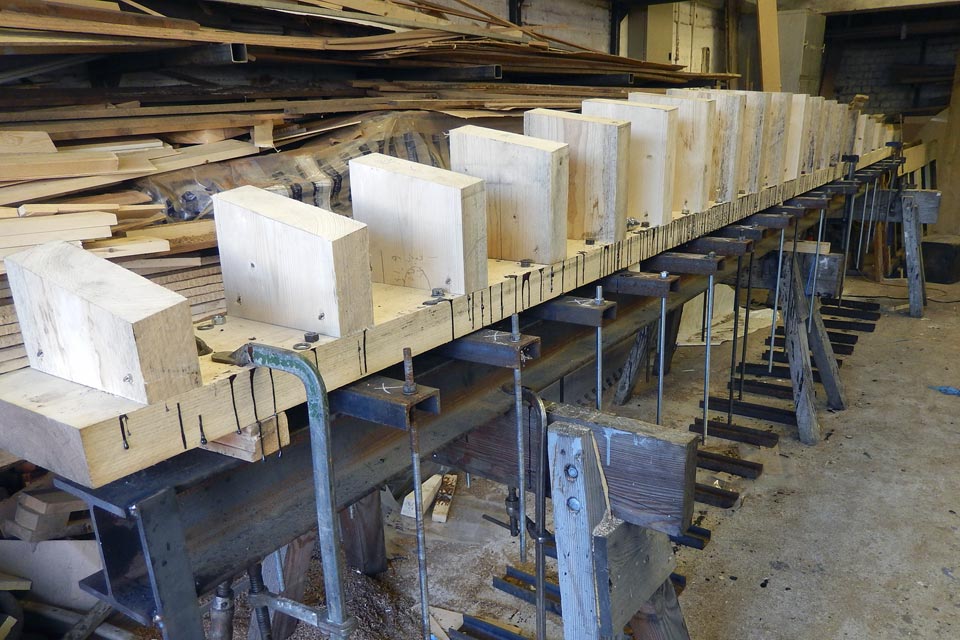

Once the templates had been translated to a jig which matched the hull shape of HMS Victory, construction of the new planks began. They are made of 1 inch laminates of teak glued together and clamped over the jig to give the exact curvature and twist.

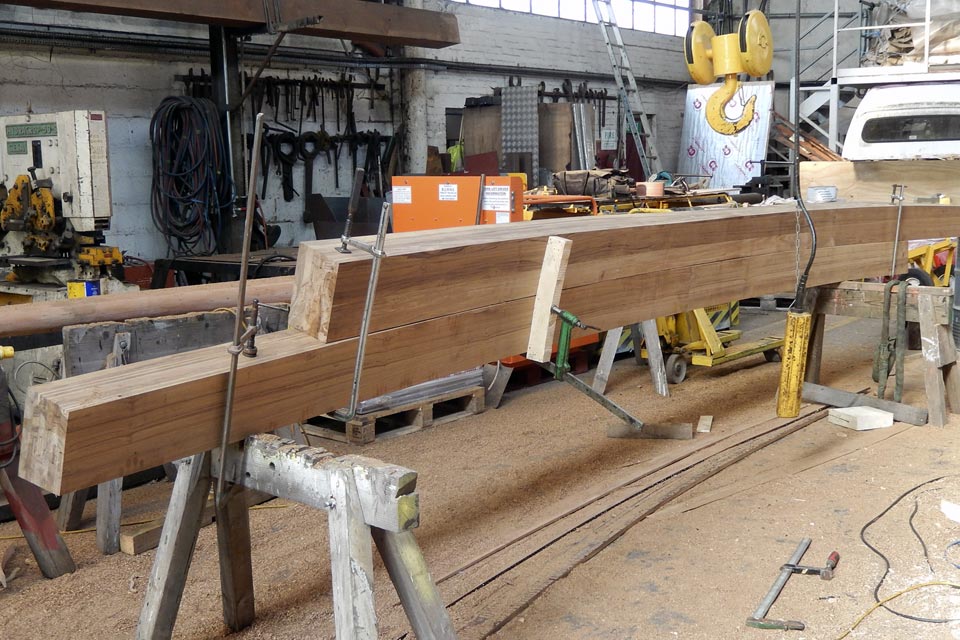
When the glue had set, the planks were planed to size and the edges bevelled to ensure an exact fit to the adjoining planks. Caulking seams were made on the plank edges and ends and they were ready for fitting.
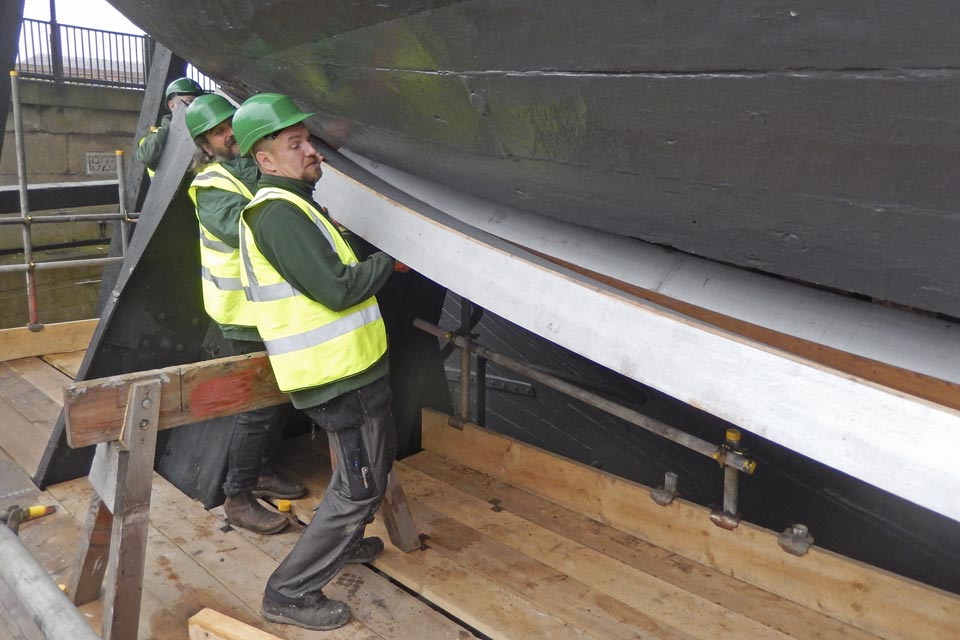
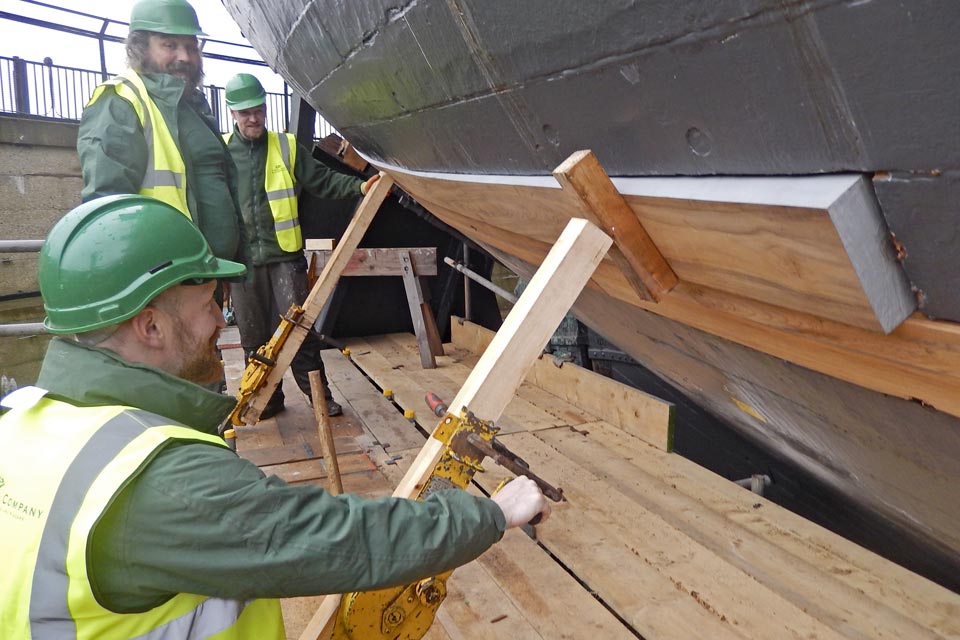
The fitting was the easy part as the new planks had been set to the exact shape and twist by the laminating process.

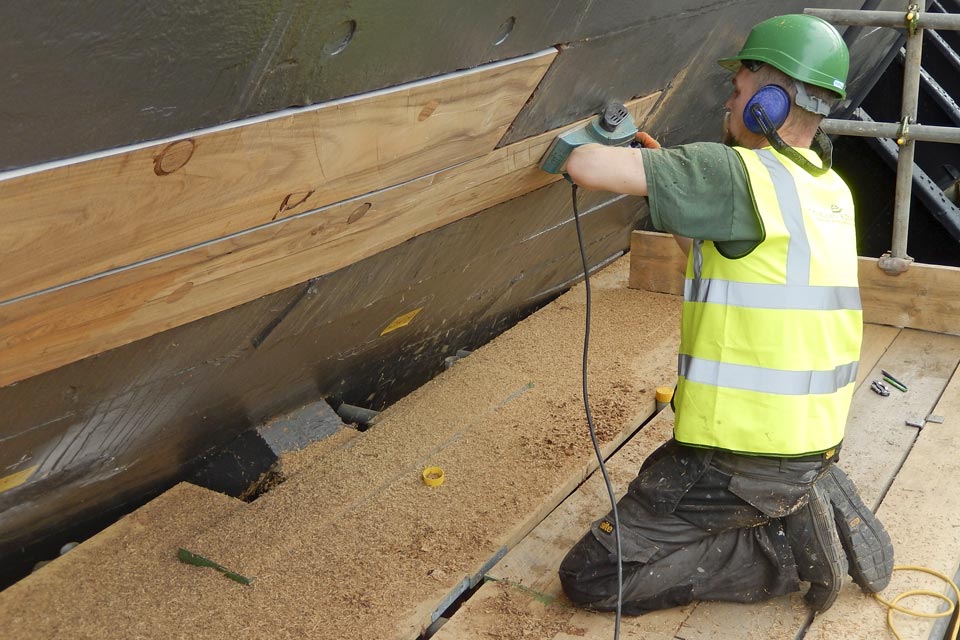
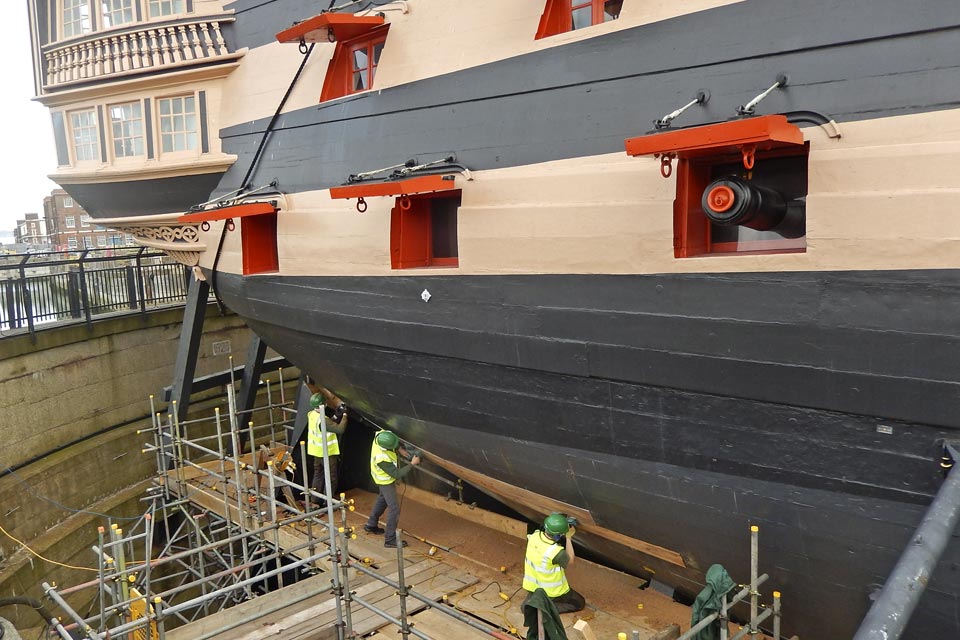

Once in place, the planks were fastened using new stainless steel bolts and coach screws, and the plank seams were caulked with oakum and payed (covered) with mastic.

